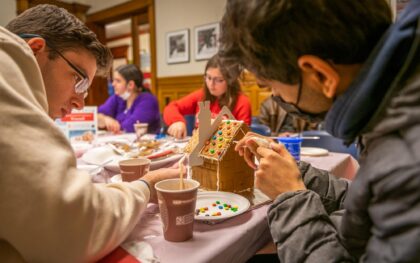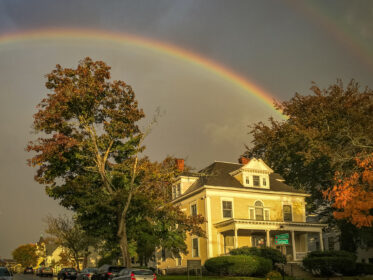Novels, thefts, and a third-floor bathtub
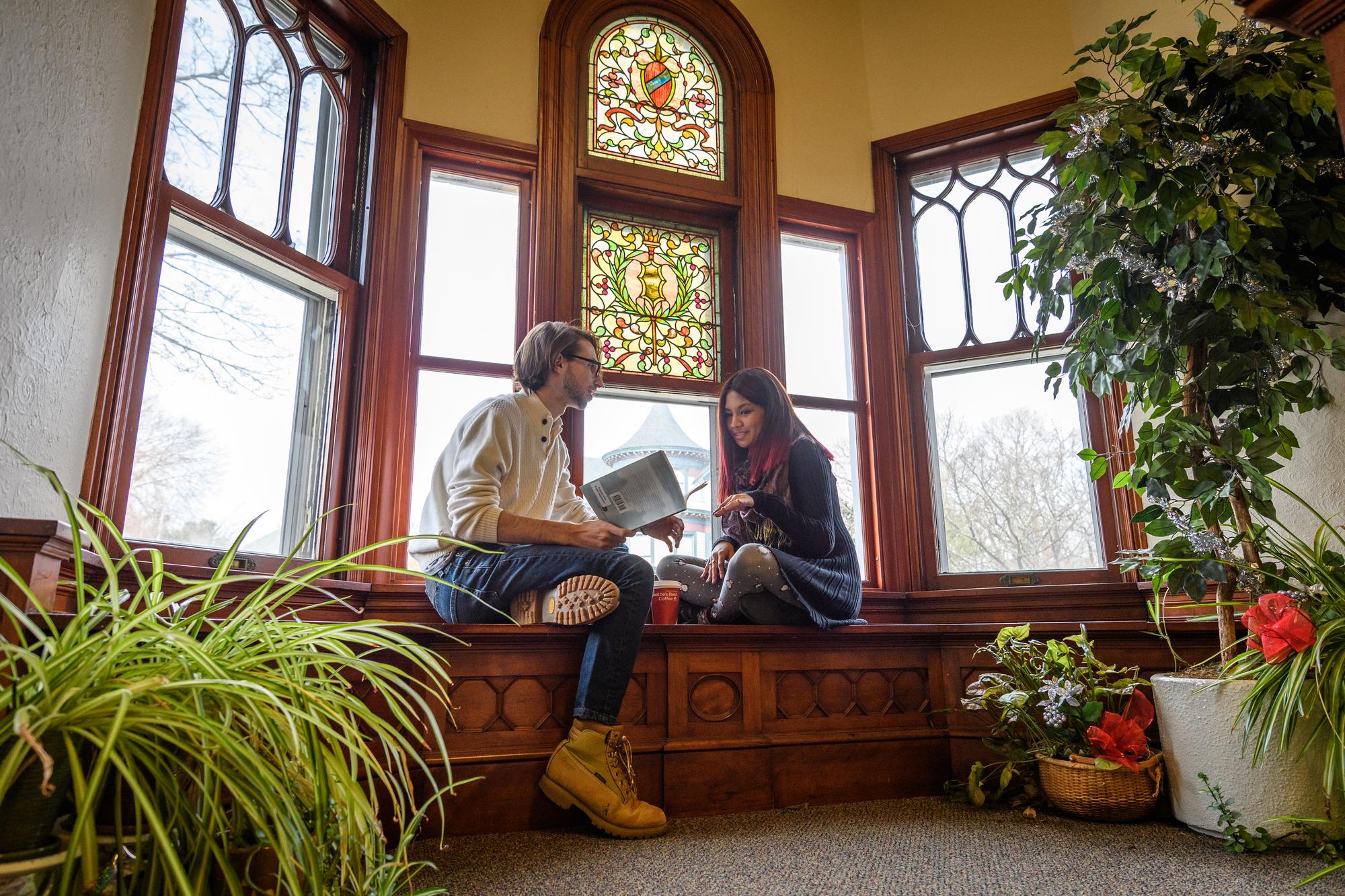
This story is one in an occasional series exploring the architecture of Clark’s campus and the tales, histories, and myths that live inside our walls.
English Professor Lou Bastien ’77, M.A. ’80, has been in and out of Clark’s Anderson House, also known as English House, for 45 years, first as a student and then as a faculty member. His physical bond with the building will end after his retirement in spring 2024, marking the first time since the 1980s that Bastien hasn’t settled into his office inside the Colonial Revival-style house at the corner of Woodland and Hawthorne streets.
“It’s like a second home to me,” he says.
Clark’s quaint campus presents a medley of architectural styles — from the Brutalist angles of the Goddard Library to classic red-brick halls to the contemporary geometric framing of the new Center for Media Arts, Computing, and Design. Each structure carries its own history, personality, and significance.
The cheery yellow paint and homey front porch invite students inside English House, where its classrooms and faculty offices share space with a double-walled fireplace in the lobby and even an unusual third-floor bathtub — a legacy of the building’s former life as a private residence. Original stained glass casts multicolored light down the stairs and throughout the entryway; pedimented windows and porch columns give the house its unique face.
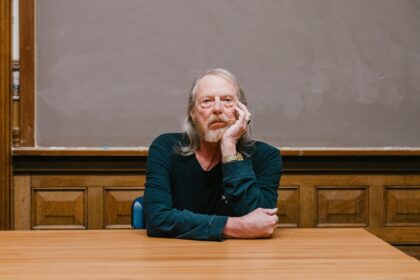
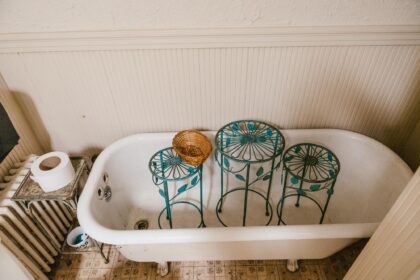
Here is where students analyze novels, interpret poems, and dissect short stories. The house is also the setting for a fascinating story of its own.
Bastien, who lived in the house’s basement for a short time while he was a student, says the building was once filled with paintings and a beautiful Greek tapestry above the stairs.
“One morning in 1980, the secretary came in and paintings were gone,” he recalls.
As recounted in a 2015 Clark magazine article about the University’s Archives and Special Collections, not all the stolen paintings were lost forever. One of them was recovered in a bus station locker after former President Mortimer Appley received an anonymous tip.
Before it was claimed by English scholars, the Anderson family lived in the house at 12 Hawthorne St., which was built in 1890. The family even boasted a Clarkie of its own — Emily Anderson, who graduated with a master’s in economics in 1929.
There is still some contention among students and faculty as to whether the proper name is English House or Anderson House. Bastien believes Anderson House is appropriate as a credit to the family.
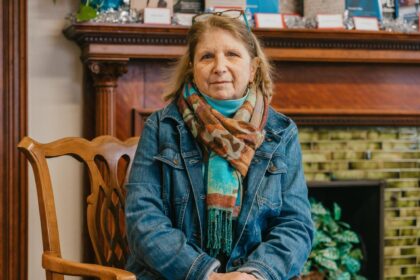
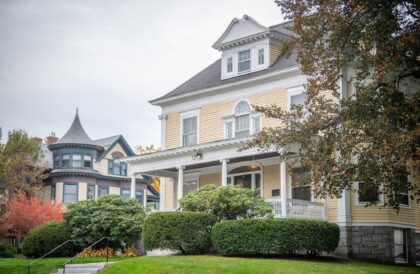
“It’s a very close-knit department and I think part of that is because they’re all literally in a house. This is a place that holds a community.”
-Christina Rose Walcott ’23, M.A. ’24
Christina Rose Walcott ’23, M.A. ’24, takes an opposing view. She insists the true name is English House. Rose Walcott researched the genealogy of the house and its previous occupants as part of a spring 2022 English Directed Study seminar called “Archives and Literary History,” advised by English Professor Justin Shaw.
“Professor Shaw and I started off our research in the 17th century with the history of the colonization of Worcester,” Rose Walcott says. “To learn about the history of the house and the way that this land has evolved, we surveyed the land deeds dating to when English House was part of a larger property.”
English House, along with the entirety of Clark’s campus, sits on the ancestral lands of the Nipmuc nation. It’s nestled in the Woodland Historical District, which runs along Woodland Street and encompasses nearly a dozen buildings owned by Clark, including Harrington House (the home of the president), Carriage House, the Cohen-Lasry House which is home to the Strassler Center for Holocaust and Genocide Studies, and Beck House, which houses the Philosophy Department.
Just as important as the history of these structures are the familiar people inside, such as Paula Connors, the English Department administrator, Rose Walcott says.
“Paula, who has been at Clark for fourteen years, is the central part of our community that connects us all to each other. She is the face that you see when you become an English major, and she goes above and beyond to make this place a home,” she says. “There is no English House without the work of people like Paula Flynn Connors.”
Rose Walcott feels a special attachment to English House.
“Not many students get to experience classes in a 19th-century house,” she says. “Chowderfest is held here; Wassail is held here. It’s a very close-knit department and I think part of that is because they’re all literally in a house. This is a place that holds a community.”
